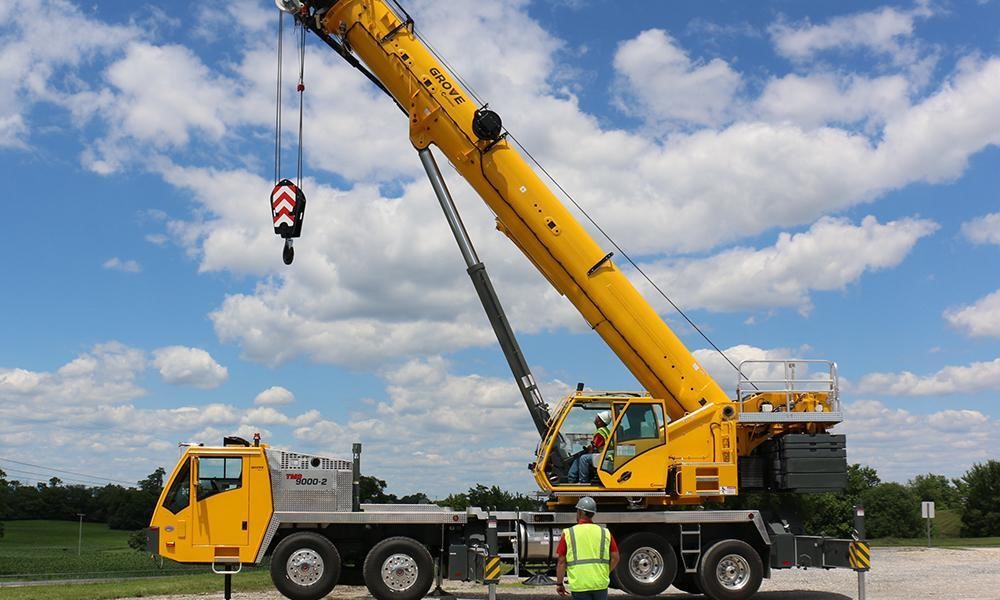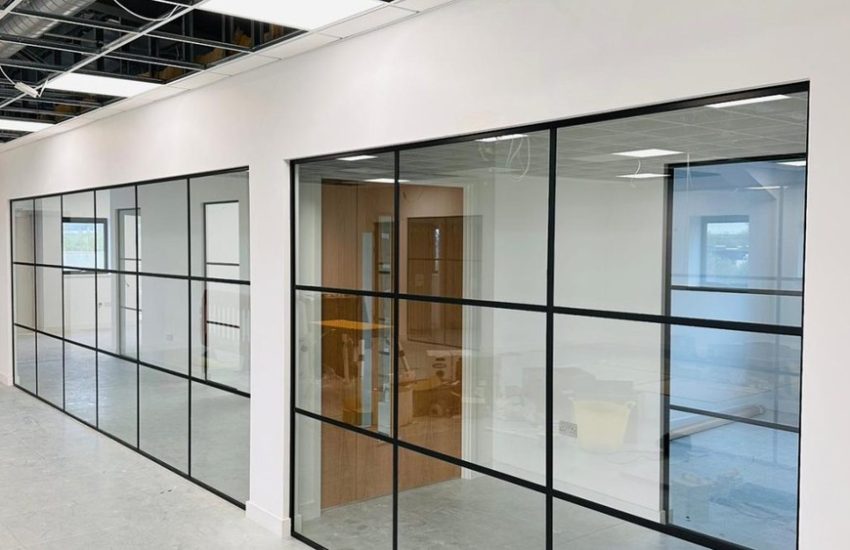Discovering the Beauty and Functionality of Loraine Cranes
When you look at the skyline of any major city, you’re not just seeing buildings; you’re seeing a testament to human innovation. Among the glass and steel, towering cranes are often a central part of the view. But these machines are far more than just tools for construction. They are, in a way, the architects of our modern world, blending functionality with a surprisingly graceful form. This post will take you on a journey into the world of Loraine cranes, looking at how they are not only changing the way we build but also how they are shaping the very idea of what a city can be.
The Elegance of Loraine Cranes in Architectural Design
Incorporating Artistry: The Crane as a Statement Piece
Loraine cranes are not just functional tools in construction; they are architectural icons that blend form and function in a way that elevates the aesthetic appeal of buildings. The integration of cranes into urban settings often transforms the skyline and gives a modernist twist to traditional design. Architects and designers frequently utilize Loraine cranes as a statement piece, accentuating the dynamic quality of construction while also serving a practical purpose. With their cutting-edge designs and vibrant industrial colors, these cranes can be viewed as large-scale sculptures. They embody the spirit of innovation, allowing observers to appreciate the interplay of machinery and artistry. Some of the most progressive urban projects employ cranes to create visually captivating structures, making them integral components in storytelling through architecture. This incorporation of cranes signifies a new era where engineering meets creativity and contributes significantly to the evolving identity of urban landscapes.
Harmonizing Structure and Nature in Urban Landscapes
As cities expand and evolve, the importance of incorporating nature into architectural design cannot be overstated. Loraine cranes facilitate this mythic connection between human-made structures and the environment. Their ability to lift heavy materials allows for designs that incorporate green spaces, vertical gardens, and even eco-friendly rooftops. Not only do these cranes facilitate the construction of such environmentally harmonious structures, but they also symbolize the potential for sustainable urban development. Through modern construction practices, cranes are utilized to lift and place materials that are eco-conscious, such as recycled concrete and sustainably sourced timber. This joining of industry and nature embodies a responsible architectural philosophy that aims for sustainability while enhancing the urban experience.
Case Studies: Iconic Buildings Featuring Loraine Cranes
To truly appreciate the impact of Loraine cranes in architectural design, one must look at notable case studies such as the Burj Khalifa in Dubai or the One World Trade Center in New York City. Both structures required state-of-the-art cranes to achieve their impressive heights. For instance, Burj Khalifa utilized different crane types, including Loraine cranes, to maneuver enormous glass panels gracefully into place, contributing to the aesthetic grandeur of the building. Each crane was meticulously positioned to minimize disruptions and maximize efficiency, showcasing the balance between form and function. Similarly, Loraine cranes were integral to the reconstruction of One World Trade Center, symbolizing resilience and progress in a city determined to rise from its past. These examples highlight the essential role that cranes play in modern architecture and underscore their status as tools of transformation in urban settings.
The Engineering Marvels Behind Loraine Cranes
Understanding Load Capacity: The Science of Lifting
The engineering that underpins Loraine cranes brings together an intricate understanding of physics and material science. Load capacity is one of the primary considerations in crane design, wherein engineers perform meticulous calculations to ensure that cranes can safely lift significant weights. Factors such as the center of gravity, wind resistance, and the structural integrity of the crane itself all contribute to determining how much weight can be safely handled. Research in this area often leads to advancements in materials, with manufacturers opting for high-strength alloys and composite materials that not only enhance load capacity but also reduce the overall weight of the crane, thereby allowing for greater flexibility in design. These innovations establish a foundation for safety and reliability, ensuring that cranes can adapt to various construction environments and demanding projects.
Advanced Technology: Innovations in Crane Mechanics
The realm of crane technology is one of constant evolution, with advancements emerging at a rapid pace. Loraine cranes are at the forefront of this technological revolution, incorporating smart systems that enhance their operation. For instance, many modern cranes are outfitted with GPS and sensors that provide real-time data regarding load distribution, movement patterns, and structural stresses. Such technologies not only make cranes easier to operate but also significantly elevate safety standards, enabling operators to make informed decisions while maneuvering heavy materials. Innovations like computer-controlled systems for precise placement and mobile crane applications demonstrate how technology is improving efficiency and effectiveness in construction practices. With such advancements, Loraine cranes are proving indispensable not only in reducing labor costs but also in enhancing the overall safety of construction sites.
Safety Protocols: Ensuring Stability and Reliability
In a field where safety is paramount, the protocols surrounding the operation of Loraine cranes are rigorous and continually evolving. Comprehensive training programs are in place for operators, ensuring they are well-acquainted with safety measures specific to crane operation, load handling, and emergency procedures. Regular maintenance and inspections are mandated to keep cranes in optimal working condition, reducing the risk of accidents dramatically. Additionally, many cranes are now equipped with automatic safety features, such as overload sensors and shut-off mechanisms that prevent them from operating beyond their limits. The implementation of these protocols not only safeguards the workforce but also enhances public safety, as construction accidents can have far-reaching consequences. Ultimately, robust safety measures reflect a commitment to responsible engineering and operational excellence.
Environmental Impact and Sustainability of Loraine Cranes
Reducing Carbon Footprint: Eco-friendly Crane Solutions
Amid growing environmental concerns, the construction industry is increasingly focused on reducing its carbon footprint. Loraine cranes, with their contemporary designs and operational efficiencies, play a vital role in this mission. The shift towards electric-powered cranes is an example of how the industry is adapting; these machines not only emit fewer greenhouse gases but also minimize noise pollution, creating a more sustainable construction approach. The implementation of energy-efficient technologies, coupled with sustainable practices during construction, positions Loraine cranes at the forefront of greener building methodologies. Furthermore, innovations in biofuels and other alternative energy sources suggest a promising future for cranes that are not only efficient but also environmentally responsible.
Recycling and Reusing Materials: A Sustainable Approach
The principle of recycling extends beyond paper and plastic; in modern construction, Loraine cranes also support sustainable practices around material handling. Deconstruction projects often rely on cranes to carefully disassemble and salvage materials that can be reused in new projects. This not only reduces waste but also conserves resources, emphasizing a shift towards a circular economy in construction. Concrete, steel, and even fixtures can be reclaimed, thanks to the versatility of Loraine cranes, which make the recycling process efficient and effective. The cranes’ ability to handle various materials smoothly reflects the industry’s commitment to sustainability and resourcefulness, inspiring others to view waste in a different light.
Future Trends: The Move Towards Greener Cranes
Anticipating future trends, the construction industry is likely to see a surge in the development of greener cranes. With ongoing research into materials that are lighter yet more durable—such as carbon fiber and ultra-high-performance concrete—engineers are poised to revolutionize crane designs to further enhance sustainability. Additionally, advancements in automation and artificial intelligence (AI) are set to impact how cranes operate, reducing energy consumption and increasing efficiency. Predictive analytics could soon allow for better resource allocation, ensuring that cranes operate only when needed and in the most efficient manner possible. Moreover, the potential for integrating renewable energy sources, such as solar panels on cranes, offers a glimpse into a more sustainable operational future.
The Cultural Significance of Loraine Cranes Globally
Symbolism of the Crane in Various Cultures
Cranes have long been revered across various cultures as symbols of longevity, prosperity, and transformation. In many Asian cultures, cranes are seen as auspicious symbols of good fortune and eternal happiness, often appearing in art, folklore, and traditional celebrations. The Japanese belief in the thousand origami cranes—where folding a thousand cranes promises good luck—further exemplifies how these birds encapsulate hope and resilience. Similarly, in Western contexts, cranes are often associated with hard work and construction, serving as powerful reminders of human ingenuity in building civilization. The symbolism extends to Loraine cranes, which, through their utility and design, reflect the intersection of human aspiration and natural beauty.
Celebrating Cranes in Art and Literature
The aesthetic appeal of cranes, both avian and mechanized, finds its way into artistic expressions across the globe. In literature, cranes frequently symbolize the transient nature of life and the human spirit’s resilience. Poets and writers highlight the beauty of these towering machines alongside descriptions of their mechanical prowess, imbuing them with an almost mythical quality. Artists often capture the juxtaposition of Loraine cranes against blossoming urban landscapes, illustrating how the beauty of construction can coalesce with natural wonders. Exhibits and installations celebrating cranes draw attention to their role not only in enhancing skylines but also in shaping human destinies.
The Future of Crane Symbolism in Modern Society
As urbanization progresses and the skyline evolves, the symbolism surrounding cranes, particularly Loraine cranes, is likely to shift yet again. Already, these structures are seen as emblems of progress and recovery in cities worldwide, representing hope amid challenges such as climate change and economic uncertainties. In the future, Loraine cranes may come to symbolize sustainable development and advancements in green technologies. They encapsulate the essence of rebuilding and regeneration, just as they lift new edifices from the ground up. Over time, the deeper cultural meanings attached to cranes will require a reassessment that mirrors societal shifts towards environmental consciousness, stimulating conversations about our paths to sustainability in architecture and urban planning.




